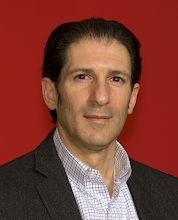Sunstein is eminently qualified for the position (early stint at the Justice Dept., law professor at Harvard and Chicago, etc). But to me what makes this appointment most exciting is his work in the area of behavioral economics (the study of why people are so irrational when making important decisions and the collective effect these bad decisions have on our economy and society).
Last year Sunstein co-authored a book called “Nudge, Improving Decisions about Health, Wealth, and Happiness.” Nudge addresses how organizations, including the government, can help people make better decisions whether related to living healthier, retirement planning, selecting a mortgage, etc.
Choice architecture
The big idea behind Nudge is the concept of choice architecture - the idea that by carefully designing the context in which people make choices designers can help them make better decisions. This is needed, apparently, because people are ill-equipped in many situations to make decisions that are in their best interests. There are many causes for this situation: lack of information, bad habits, impulsiveness, etc. Two examples of choice architecture in action, one arguably more intrusive than the other, include:
- A “Yield” sign before a hair-pin curve on a dangerous mountain road
- New York City’s ban on artificial trans-fats in restaurant served food
- The increasing complexity of our society
- The growing number of options offered to consumers
- The growing influence of the Web on consumer decision making and purchase habits
Consumers are overwhelmed by the amount of information provided to them and the seemingly endless options available in the marketplace. In many situations most don’t have the expertise, experience or time to determine what’s right for them. At best the result is inertia; at worst the result is a bad, misinformed decision. This is especially distressing if the decision relates to something important such as a medical treatment, choosing a mutual fund or selecting a prescription drug plan.
As a result I believe consumers will eventually give some organizations (both public and private) greater permission to educate them about matters they are unfamiliar with and, in certain situations, to make outright decisions for them. This will be especially true in areas where a bad decision could have a significant negative impact on a person’s live.
This will no doubt have an impact on how consumer facing Web sites are architected and designed. To be effective choice architects, Web planners, information architects and designers will have to go beyond just understanding the demo-, psycho-, and techno-graphic profile of their target consumers. They will also have to consider, depending on the situation, a host of additional attributes about their intended users such as:
- The kinds of biases they might have about a product or service and how that could either reinforce or weaken a choice
- False assumptions they might have and how they might influence their decision making process
- The impact of how a set of options is presented or ordered might have on a decision
- Any habits or weaknesses that could lead to unhealthy, unsafe or fiscally irresponsible decisions
- What, ultimately, is in their best interests
To quote the authors of Nudge: “The human brain is amazing, but it evolved for specific purposes, such as avoiding predators and finding food. Those purposes do not include choosing good credit card plans, reducing harmful pollution, avoiding fatty foods, and planning for a decade or so from now. Fortunately, a few nudges can help a lot.”

An Extreme Example of Choice Architecture in Web Design?




No comments:
Post a Comment